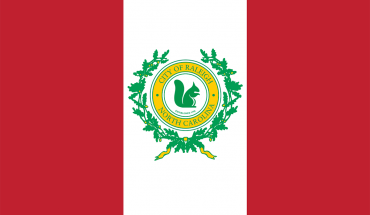Benjy Shelton serves Mexican-inspired cuisine on Person Street
by Charles Upchurch | photography by Justin Kase Conder

The first thing Benjy Shelton told me was a lie. I’d walked over to his boho-Mexican cocina-and-bar, Gringo A Go Go, from my office downtown. Never met him before. Stopped by on a Monday, when the place was closed, to ask about doing a short write-up for this magazine. He scrunched up his face behind his glasses, his greying hair a mop. “I’m really boring,” he said. Uh-huh.
You’ve seen Gringo on the corner of Edenton and Person Streets. The 1930s-era mission-style service station was converted to a pocket-sized neighborhood cantina on the edge of Oakwood, with fiesta lights strung about, hammered metal cacti sprouting and a funky little vintage car parked outside (it’s a ‘48 Crosley.) This is the work of an artist.

Inside, Shelton serves up what some say is the best Mexican comfort food in town. Always local. Organic whenever possible. Great-tasting vegan options. And fresh-squeezed juices that elevate the margaritas to rare levels of thank you Jesus. All in a footprint with room for just 10 tables (10 more outside) and a design motif that leans toward—how did that Yelper put it?—slacker cowpunk meets Pee Wee’s playhouse.
Boring? Please.
Shelton is an iconoclast. This is the guy that created Lilly’s Pizza in 1992, giving Five Points an invigorating dose of underground cool.
After high school in Lucia, North Carolina, a speck outside Charlotte, Shelton moved to Raleigh in the early 80s as one of the original members of the rock outfit Corrosion of Conformity. He was known in music circles, sang and played in various bands and briefly served as road manager for pop stalwarts The Connells.
With Lilly’s, Shelton found an outlet for his creative mojo. The place boomed—he even turned down an offer from a major restaurant chain to buy it. Eventually, though, the hours took a toll. After six and a half years he sold it. Then, he ghosted.
Shelton bugged out to the small mountain village of Almolonga in the Mexican state of Guerrero, four hours south of Mexico City. Eighty degrees every day, sixty every night. “Something to eat on every tree,” he said. “Most Americans wouldn’t live there. No mail service, no phone. But every day, just magnificent.” It was there that he fell in love with simple, home-cooked Mexican food, like posole, chilaquiles and tortas. It was a good life for the expatriate farmer with 16 hectares of land and a smattering of cows, herding them to the high pastures in the morning and back down at sunset.
“I would have lived there for the rest of my life, but it became too dangerous,” Shelton says. “I knew the heroin epidemic was coming when they started growing poppies everywhere.” During his years in Mexico, Shelton devised different ways to make a living, usually involving making pick-up runs stateside. He bought sneakers from discounters in the U.S., loaded down his van and returned to Mexico. “I made a lot of money selling Air Jordans,” he said.

In summer, he would drive—drive—to Nantucket Island and run an ice cream truck for 10 weeks before making the 3,100-mile drive back. Once, he made the return trip in the same truck loaded with bicycles to give away in Almolonga. “I had’em hanging off the side,” he said with a smile. “It looked like the Beverly Hillbillies.”
By 2012, the cartels were moving in. “I had to leave in a hurry,” said Shelton. Back in Raleigh, he began looking for a place to open a humble Mexican café. Since opening in 2014, Gringo A Go Go has gained a diverse clientele, intermingling downtown progressives and Jones Street conservatives. “They open up to me,” he said. “I could tell you tales.”

Tales, indeed. Like ones of clandestine junkets to Cuba to liberate vintage motorcycles. It has been, as the former punk rocker describes it, a creative life. “I tried painting, I tried being a sculptor,” he said, gesturing around the room. “This is my sculpture.”
Shelton may not be in Raleigh for long. He talks about South America. Suriname and Guyana are on his short list. Still, he admits to the occasional twinkling of bliss when he thinks about this creation at 100 N. Person St. “I remember once on a spring night, patio lights up, flowers in bloom, people eating and drinking and happy,” he said, “it really felt—in that moment—like nirvana.” True story.



